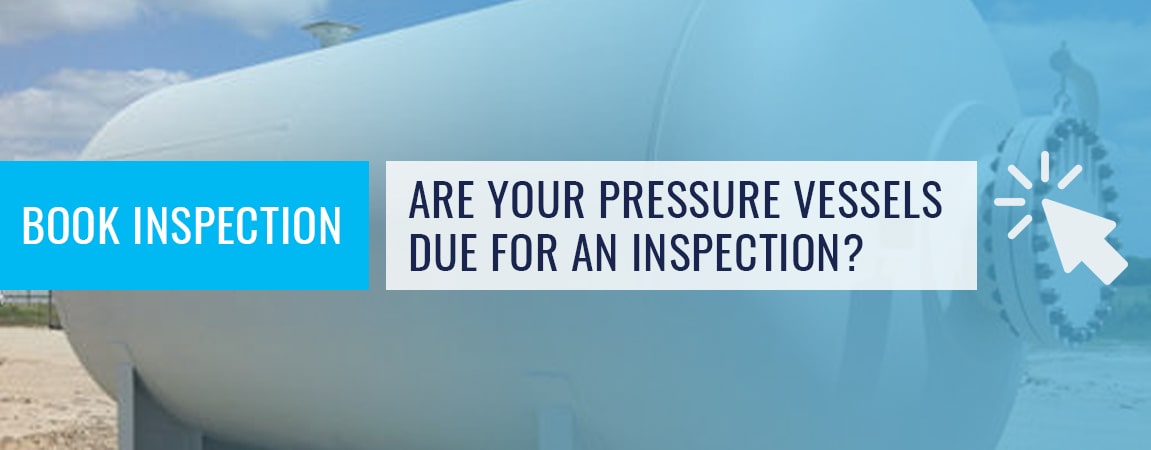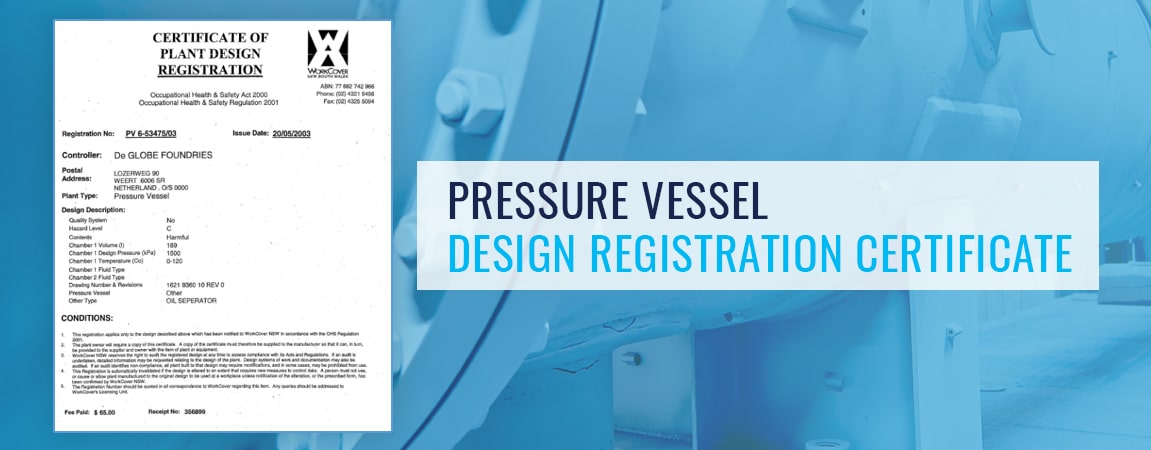Do you own pressure equipment?
If so, it’s important to understand the mandatory requirements and applicable Australian Standards (AS) to not only ensure your equipment is safe to operate, but also avoid fines that may come with non-compliance to Australia’s current safety laws and legislation.
So, what are we referring to exactly when it comes to pressure equipment?
The most common type of pressure vessel used is an air receiver for the storage of compressed air. Other types of pressure equipment include: accumulators, autoclaves, steam boilers, hot water boilers, chiller/refrigeration equipment, gas storage vessels, pressure piping, oil/fuel filters and vacuum trucks.
What is a Pressure Vessel?
A pressure vessel is a container or vessel that holds a fluid, either a gas or liquid, which is subject to internal or external pressure. Pressure vessels includes the interconnected parts and components, valves, gauges and other fittings up to the first point of connection to the pipework.
AS1210 – Design Code for Pressure Vessels
The design code for pressure vessels, AS1210 requires every pressure vessel to be protected by a relief device that prevents the vessel pressure from rising more than 110% of the vessel’s design pressure.
This pressure relief device must be inspected annually and recalibrated at the same time as the internal inspection frequency of the pressure vessel or five years, whichever is the lessor.
AS4343 – Pressure Equipment-Hazard Levels
Every pressure vessel has a Hazard Level ranging from a Hazard Level A, being the most hazardous to a Hazard Level E being the least hazardous. Hazard Levels are determined using the criteria in AS4343-Pressure Equipment-Hazard Levels.
Factors that influence a pressure vessels Hazard Level include:
- Design Pressure (P)
- Volume (V)
- Contents
- Location
- Fluid Temperature
To comply with the current laws, legislation and Australian Standards, you need to know the Hazard Level of your pressure equipment.
You might also like: What’s the Difference between Ton and Tonne?
pressure vessel Compliance Requirements / Design Registration
According to most states current safety legislation, every pressure vessel with a Hazard Level A, B, C or D must be design registered with a regulatory authority with responsibility for plant safety e.g. WorkSafe WA, NSW WorkCover, SafeWork SA etc.
You are breaking the law if you operate pressure equipment with a Hazard Level A, B, C or D without the current design registration and significant penalties up to $62,500 may apply depending upon which state legislation you fall under.
Did you know that under most states current safety legislation it is an offence for a pressure vessel manufacturer, importer or supplier to provide pressure equipment that doesn’t have a current design registration, with significant penalties for failing to do so. Only design registration numbers issued within Australia by a regulatory authority are acceptable.
A design registration number is mandatory if your pressure vessel has a Hazard Level A, B, C or D.
Individual Registration / Deregistration of Equipment
In addition to the design registration all pressure equipment with a Hazard Level A, B or C must be individually registered with the states regulatory authority with responsibility for plant safety in the state where the pressure equipment is located. Renewal of individual plant registration is set out by each states regulatory authority and is typically annually.
Vessel owners must ensure that pressure equipment is correctly registered with the relevant states regulatory authority facing fines for non-compliance. The regulatory authority must also be informed if the unit is relocated or decommissioned. Contact AME to find out which legislation you fall under.
AS3788 – Pressure Equipment Inspection & Maintenance Requirements
Failing to inspect pressure equipment in accordance with the applicable Regulations may subject you to fines. It’s the pressure vessel owner’s responsibility to ensure all pressure equipment in use is certified as “Safe to Operate” and registered with the appropriate regulatory authority within your state.
A “competent person” needs to regularly inspect and assess boilers and pressure vessels categorised as Hazard Level A, B or C in accordance with AS3788-Pressure Equipment- In- Service Inspection.
You are breaking the law if you operate pressure equipment with a Hazard Level A, B or C and it has not been assessed as “Safe to Operate” by a competent person.
Inspections of pressure equipment is clearly identified in AS3788 and occurs –
- During commission and / or recommissioning;
- During service – Periodic in-service inspection is completed as per Table 4.1 in AS3788. In-service inspections consist of both internal and external inspections;
- Following repairs (Pressure vessels have to be hydrostatically tested following weld repairs);
- Pressure relief and safety valves are subject to regular inspection and overhaul / bench testing to ensure they are in a safe working condition.
Read: Pressure Vessel Failure Case Study
Periodic Pressure Vessel Inspection frequencies according to AS3788:
External and internal periodic inspection frequencies from Table 4.1 of AS3788, for some of the more common types of pressure equipment are –
- Air Receivers* – External 2 years & Internal 4 years
- Refrigeration Vessels* – External 2 years & Internal 12 years
- Accumulators* – External 2 years & Internal 12 years
- Above ground LPG gas vessels* – External 2 years & Internal 10 years
*For 2 yearly inspection certificates to remain valid, annual checking / testing of pressure relief and safety devices is required.
Under most states current safety legislation, inspection of pressure equipment is mandatory with severe fines for non-compliance.
Pressure Equipment Repairs
While, these may sound like common sense, when repairing, altering or modifying pressure equipment, particularly shell repairs ensure you’ve covered these requirements:
- The vessel has been assessed and tested to the standard to ensure correctness.
- You have a strict repair and testing procedure, including weld procedure, post weld heat treatment and NDT-Non Destructive Testing and inspection of the repairs;
- All weld repairs are carried out by competent qualified welding personnel;
- The vessel is hydrostatically tested as per the standard
Record Keeping
Most current state safety legislation has a requirement that all tests and certificates, including repair procedures, repairer’s qualifications are kept and maintained in an equipment file.
As you can see, there’s a lot to think about and manage when it comes to the registration, maintenance, inspections, repairs and record keeping for your pressure equipment!
AME can help take the “pressure” off. We provide independent technical competence to verify that your assets, equipment, plant and systems are designed, constructed and operate in accordance with the applicable industry standards, classification and statutory requirements.
Pressure Safety Valve & Pressure Relief Valve Inspection Requirements
PSVs & PRVs require 3rd party annual inspection by a certified person to confirm they are undamaged and remain usable. Instead of testing, you can also replace the valves annually. Some companies find that more economical.
INTERESTING READ: Difference between Pressure Relief Valve and Pressure Safety Valve Explained
Keen to learn more on how we can help?
DISCLAIMER: The statements, views and opinions presented in this article are those of the author. Asset Management Engineers Pty Ltd does not warrant the correctness of the information provided or its fitness for any purpose.







